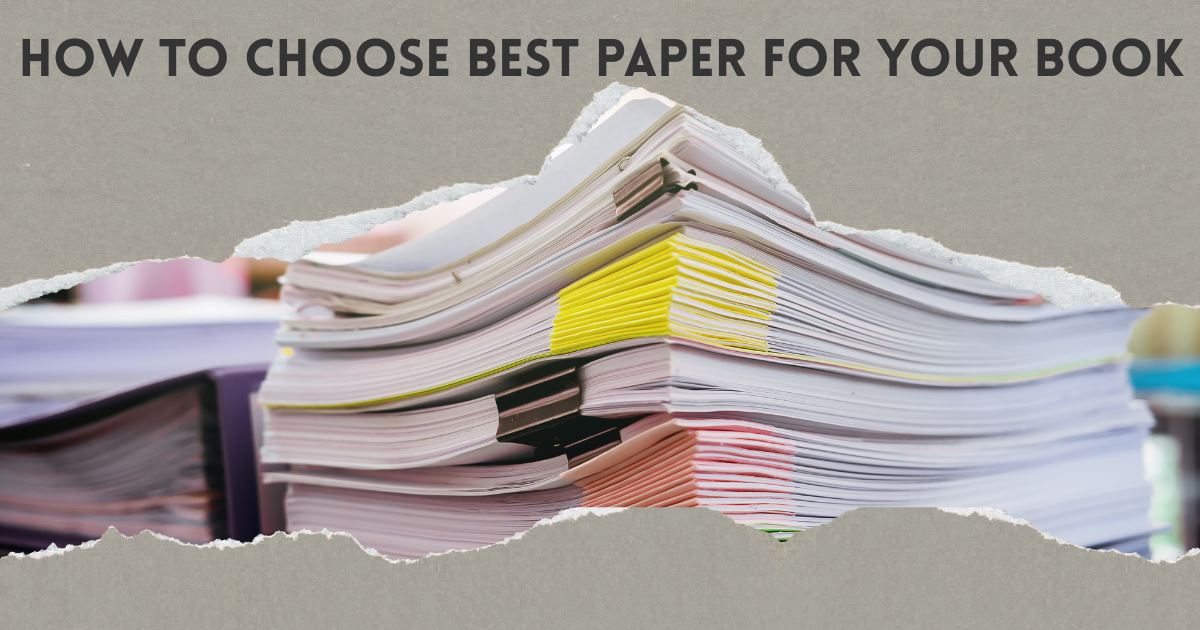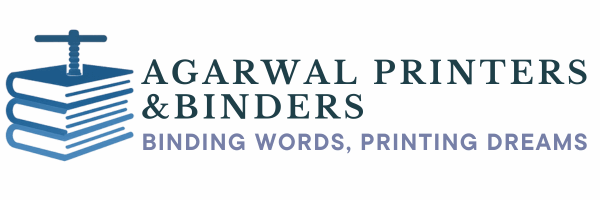
Writing a book is a big accomplishment but making sure it looks and feels great in readers’ hands is just as important. One of the most overlooked decisions in book printing is choosing the right types of paper for your project.
The paper you select impacts everything from how your book reads to how long it lasts and even how much it costs to print and ship. At Agarwal Printers & Binders, we guide authors, publishers, and businesses through these choices every day. Here’s our expert guide to help you choose the perfect paper for your book.
1. Think About Your Book’s Purpose When Choosing Types of Paper
Before getting technical, ask yourself:
- Is this a novel meant to be read under warm light at night?
- A children’s book full of colorful illustrations?
- A coffee table book meant to impress with vivid photos?
- Or a workbook that people will write in?
Each of these has different needs. Choosing the right types of paper ensures your book looks and feels professional.. The right paper makes your content shine and enhances your reader’s experience.
2. Understand the Basics: Paper Weight & Thickness
When printers talk about paper, you’ll hear terms like GSM (grams per square meter) or paper weight.
- 80-100 GSM: Light and thin, like standard office printer paper.
- 100-130 GSM: Good for novels and general books—opaque enough to avoid show-through.
- 150-170 GSM: Feels more substantial, suitable for high-quality magazines or books with some images.
- 200-250 GSM: Used for thick pages, photo books, or inserts.
- 300+ GSM: Heavy card stock—often used for covers.
3. Coated vs Uncoated Paper: Explore Different Types of Paper
Uncoated Paper
This has a natural, slightly rough texture. It’s easy to write on, doesn’t glare under light, and feels more traditional.
Best for:
- Novels
- Poetry books
- Workbooks and journals
Coated Paper
This paper is treated with a surface coating (gloss or matte) that makes colors pop and gives a smoother feel.
Best for:
- Photo-heavy books
- Cookbooks
- Art and coffee table book
- Product catalogs
You’ll often choose between:
- Gloss: Bright, shiny finish colors appear vibrant.
- Matte: Soft, elegant, reduces glare, and adds a sophisticated look.
4. Paper Color Options: Choosing the Right Types of Paper
Opacity means how much the paper prevents light from passing through. Low opacity means you might see the text or images from the other side of the page.
For text-heavy books like novels, moderate opacity is fine. For books with heavy ink coverage (like illustrations on every page), opt for thicker, more opaque paper.
5. Don’t Forget the Paper Color
Paper isn’t only white!
- Bright white: Great for image-heavy books, marketing pieces, and anything requiring true color reproduction.
- Off-white/cream: Easier on the eyes for long reading sessions, often preferred for novels and biographies.
6. Factor in Budget & Shipping
Heavier paper feels luxurious but also costs more and increases shipping weight.
We can help you balance quality and budget by showing options side by side.
Learn more about printing costs in our printing price guide.
7. Always Ask for Samples
Nothing replaces actually seeing and feeling the paper. At Agarwal Printers & Binders, we’re happy to provide paper samples or printed examples so you can compare finishes, weights, and colors before making your decision.
Wrap-Up: Let Your Book Shine
Choosing the best types of paper isn’t just a technical step—it’s about creating the right feel for your story, your brand, and your readers. Whether you want crisp, bright pages that make colors explode or soft cream pages perfect for cozy night reading, the right paper brings your book to life.
📞 Ready to print?
Talk to us today. We’ll walk you through all the paper options and help you pick the one that makes your book unforgettable.
For more printing tips, design inspiration, and behind-the-scenes updates, follow us on Instagram
